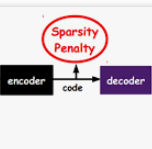Tensor data often suffer from missing value problem due to the complex high-dimensional structure while acquiring them. To complete the missing information, lots of Low-Rank Tensor Completion (LRTC) methods have been proposed, most of which depend on the low-rank property of tensor data. In this way, the low-rank component of the original data could be recovered roughly. However, the shortcoming is that the detail information can not be fully recovered. On the contrary, in the field of signal processing, Convolutional Sparse Coding (CSC) can provide a good representation of the high-frequency component of the image, which is generally associated with the detail component of the data. Nevertheless, CSC can not handle the low-frequency component well. To this end, we propose a novel method, LRTC-CSC, which adopts CSC as a supplementary regularization for LRTC to capture the high-frequency components. Therefore, LRTC-CSC can not only solve the missing value problem but also recover the details. Moreover, LRTC-CSC can be trained with small samples due to the sparsity characteristic of CSC. Extensive experiments show the effectiveness of LRTC-CSC, and quantitative evaluation indicates that the performance of our model is superior to state-of-the-art methods.
翻译:光学数据往往由于复杂的高维结构而缺少价值问题。为了完成缺失的信息,已经提出了许多低射线天线完成方法(LRTC),但大多数方法都取决于低频数据的低属性。这样,原始数据中低端部分可以大致地恢复。但是,缺点是,详细信息无法完全恢复。相反,在信号处理领域,革命性散射编码(CSC)可以很好地反映图像的高频部分,通常与数据的详细部分有关。然而,CSC不能很好地处理低频部分。为此,我们提出一种新的方法,即LRTTC-CSC,采用CSC作为LRTC捕获高频部分的补充规范。因此,LRTTC-CC不仅可以解决缺失的价值问题,还可以恢复细节。此外,LRTC-C CCC可以接受小样本培训,因为C的简单度特征和高频部分。我们CSC的高级性能实验显示,CS-C的高级性能评估是CS-C的高级性能测试方法。




